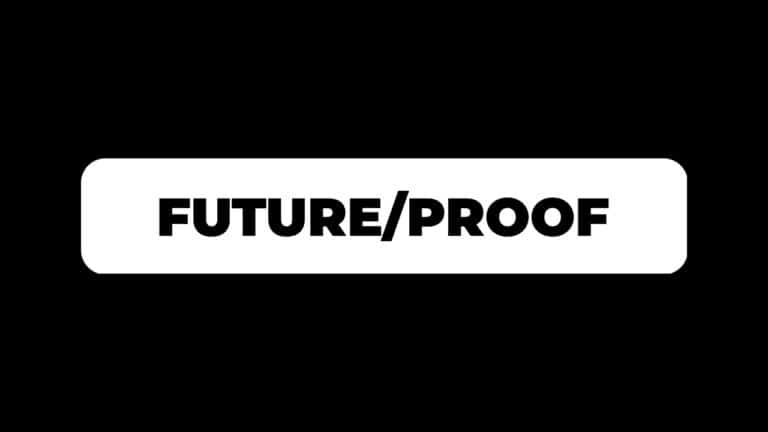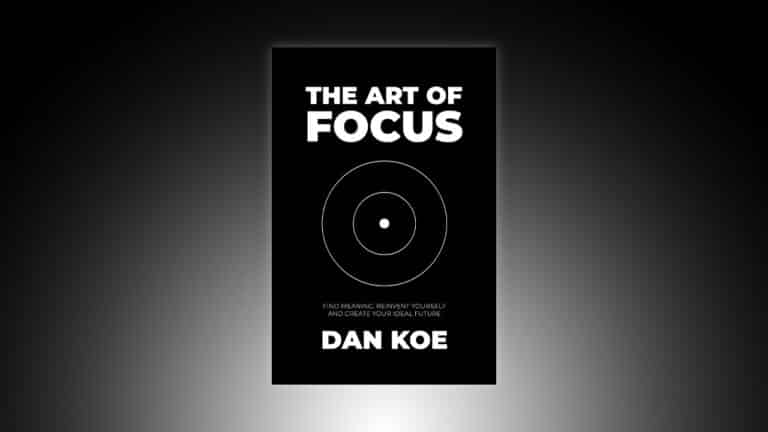You have $100,000 trapped in your head.
Or, it’s lying around in your Google Drive, Notion, or Kortex.
The point is:
You have skills, interests, and some kind of expertise you can package up into a product that sells while you sleep.
What you learn in this letter will determine most of your success as a creative.
But this letter isn’t just about building a product.
There are a lot of things that come into the mix like:
- How to find a hyper-profitable idea
- How to create a marketing strategy and iterate with failure
- How to position a boring product as something people can’t ignore
- The 5 elements of an irresistible offer
- How to write a landing page even when you never have before
- How to actually build the product and how to accept payment
- And last, how to launch the product so it doesn’t sit around collecting dust (and you don’t waste your time)
Here’s the thing…
If you want to earn an independent income and have control over your time, you need a product.
This should be obvious.
However, most people are like me. You start with client work. You start to see some success. Your time gets eaten up. And worst of all, you realize how much you hate working on other people’s projects.
You left your job because you hated the work, right?
You wanted to write.
You wanted to explore your interests.
You wanted to focus on your craft but now you’re back in survival mode working from invoice to invoice instead of paycheck to paycheck.
But once you have a product that doesn’t require your time or labor to earn a substantial income, $100,000 is just a matter of persistence and iteration.
It’s liberating once you realize that if you can make $1, you can make $1,000,000, if you have a product that is capable of reaching that scale as one-person.
If you want to build a team to fulfill $1,000,000 worth of client work and beyond, be my guest, but even then, why not build a product that adds revenue to your bottom line and leads to more warm prospects for your client work?
Before we start, understand that this isn’t some get rich quick mumbo jumbo.
My first year of building a product, I made around $10,000.
Second year was $100,000.
Then $150K. Then $800K. Then $4M.
Then I felt comfortable enough to fund Kortex and had the audience to do so.
If you stick with this for years (and refuse to go back to the life you wanted to leave) you will see success.
This will be long as it is a product and marketing masterclass.
Both are crucial skills that can’t be skipped.
How To Find A $1 Million Idea — What Product To Build
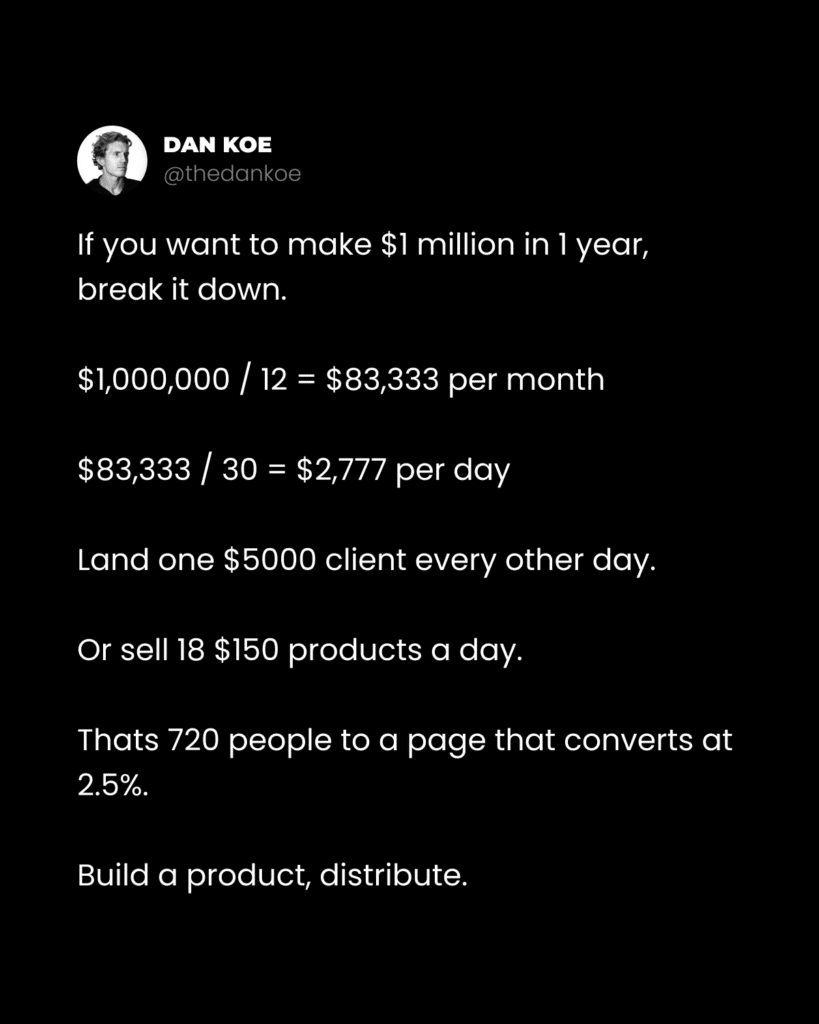
Here’s a mindf*ck for you:
You’ve already purchased a $1 million product.
You’ve purchased hundreds in fact, if not more.
Do you now what that means?
It means you’re probably overthinking it.
It means that most ideas can be taken to $1 million if you understand exactly what I am going to say throughout this letter.
Now, I’m assuming this is your first product and you are a beginner.
The best progression to follow going into a future of AI would be this:
- Build an audience as a free and high leverage traffic source
- Become an authority in your interests or expertise
- Start with a “personal system” digital product that you can test fast
- Persist and iterate until you reach $100,000+
- Then, since you have so much data and results, turn that system into something like a software or physical product
The big question there is, “What is a ‘personal system’ product?“
Well, it’s how you turn any idea into something unique. Something that can’t be replicated or replaced by AI, because it can use AI in the process.
This can be done in the form of a freelance service, coaching service, education product, or software.
As an example, my 2 Hour Writer course doesn’t teach writing. It teaches my personal system for what I write, how I write, and why I write. It positions writing—something that is either too boring or too academic—in a way that is desirable and valuable to people who are like my past self (See: You are the niche).
I write a newsletter, break that down into social posts, cross post those everywhere, and am able to build an audience on all platforms with less than 2 hours of writing a day.
I could easily turn this into a freelance service for personal brands to handle their content creation. I could also teach people how to implement this 1-1 as a coaching service for founders and executives, not just creators, because building an audience is such an important thing.
But since we want to avoid client work and control our time, the two options we are left with are an education product and software product.
Building software is now more accessible to the average person thanks to tools like Cursor and Lovable. It still takes time to learn, and you will still need to learn quite a bit of programming if you want to be decent, but building a web app or mobile app is more than possible, I’m seeing it happen every day on X.
The thing is, you still need to understand marketing and offer creation. Building the next todo app isn’t going to get you very far without a personal system that positions it as unique.
In my eyes, and for the next few years, education products are still the best starting point. And just like Cursor with programming, you can use Kortex to help with writing when the AI features release in the coming weeks.
An education product takes the form of:
- Courses
- Communities
- Cohorts
All based around a personal system with accompanying templates that can also be given with Kortex.
You know, the types of products that line Alex Hormozi’s portfolio.
The “info products” that people love to pin in a bad light as if education isn’t the most important aspect of your development or what will prepare you for a future that schools won’t be able to keep up with.
A good education product can change someone’s life 10x more than a physical product or software could any day.
Creators are decentralized teachers. They are the new school system on the internet. Creators—not content creators, just people who create their life—are those who forge new paths and pass down the esoteric information that allow you to take advantage of new opportunities.
As long as people buy books, they will buy courses. Conditioning your mind to only see half the picture of education products is as stupid as you think courses are. You don’t whine about there being ~129,864,880 books in the world (most of them bad, because anyone can type on a keyboard…), so if you can’t come to terms with info products, you’re in for a bad time.
“But Dan! People are just teaching what they do themselves!”
No shit. That’s what the market wants and that’s really the only thing anyone is actually qualified to teach.
I can handle objections about this all day, but I’ll let you think through it without some regurgitated beliefs that were conditioned into your head by some anti-guru (they educated you that education is bad, by the way, and you didn’t even pay for it!)
Education products are hyper-profitable and hyper-valuable. The perfect combination. You build them once and sell them as many times as you’d like.
So, that’s what the rest of this letter is focused on.
Turning What You Do Into A Product Idea
The best education products are the ones that:
- Solve a specific pain point
- Give people a system to get results
- Provide clarity on everything involved with performing the system
First, we need to decide the topic of the product you want to create. Then we’ll get to the fun stuff of how to market the product.
Think of an area that you have at least some experience in.
Something that you’ve taken the time to study or implement in your life.
You don’t need the personal system part yet. Just the topic.
Here’s a list that may spark some ideas.
- Writing
- Video editing
- Speaking
- Social dynamics
- Relationships & dating
- Productivity
- Web design or development
- Artificial intelligence
- Mental health
- Weight lifting
- Running
- Nutrition
- Learning faster
- Knowledge management
- Managing finances
- Landing job interviews
Simply think of ONE thing that you are above average at and write it down.
Second, we need to research products and ideas within that topic.
Our goal is to find the intersection of what works and what you can do better.
Write down at least 10-20 products or ideas.
How do you find them?
- Search your topic on course sites like Masterclass, Udemy, or Skillshare
- Search reddit for course reviews like, “Best training programs” in the health topic
- Dig through accounts you follow, join their email lists, and identify what products they sell on their site and in their funnel
- Remember products you’ve bought in the past and resurface them
- Find X accounts within that topic, use Twemex to see their top performing tweets, search for keywords related to your topic, and save posts that you can use as ideas for the product or marketing
- Find YouTube accounts within that topic, filter their videos by most popular, and write down popular video titles that could turn into a product
Let’s imagine you want to build a business around social dynamics as an interest.
You could go to the Charisma On Command YouTube channel, study their video titles, and pick a few that clearly did better than the rest.
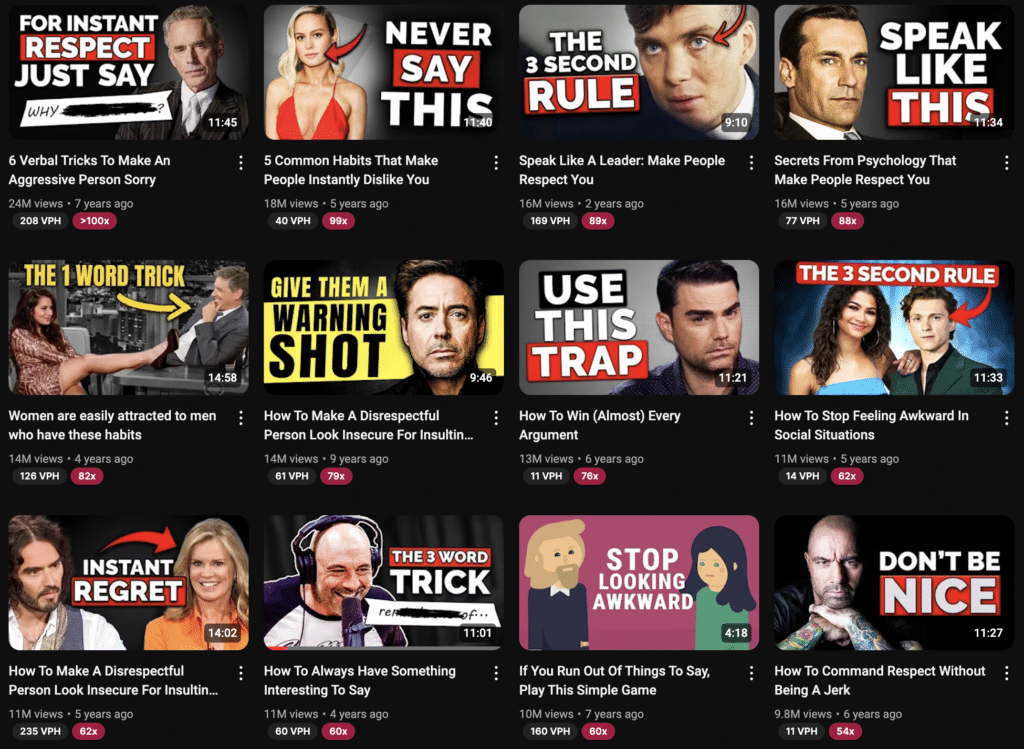
If you look at their top videos, you can instantly tell that being interesting, confident, and not insecure is something people really want.
You could create a product around that, recreate quite a few of these video topics with your own twist, and be rather confident that the product will do well.
As you research, save all of these ideas somewhere safe.
You now have a list of successful product and marketing ideas that you can combine, add to, simplify, or make unique. We’ll do that next.
For the courses you find, buy them.
Don’t cheap out on me now.
If you don’t know how to structure a product, then you need to use a few as a reference point for inspiration.
You don’t need to know exactly what you want to create just yet.
How To Market & Build The Product
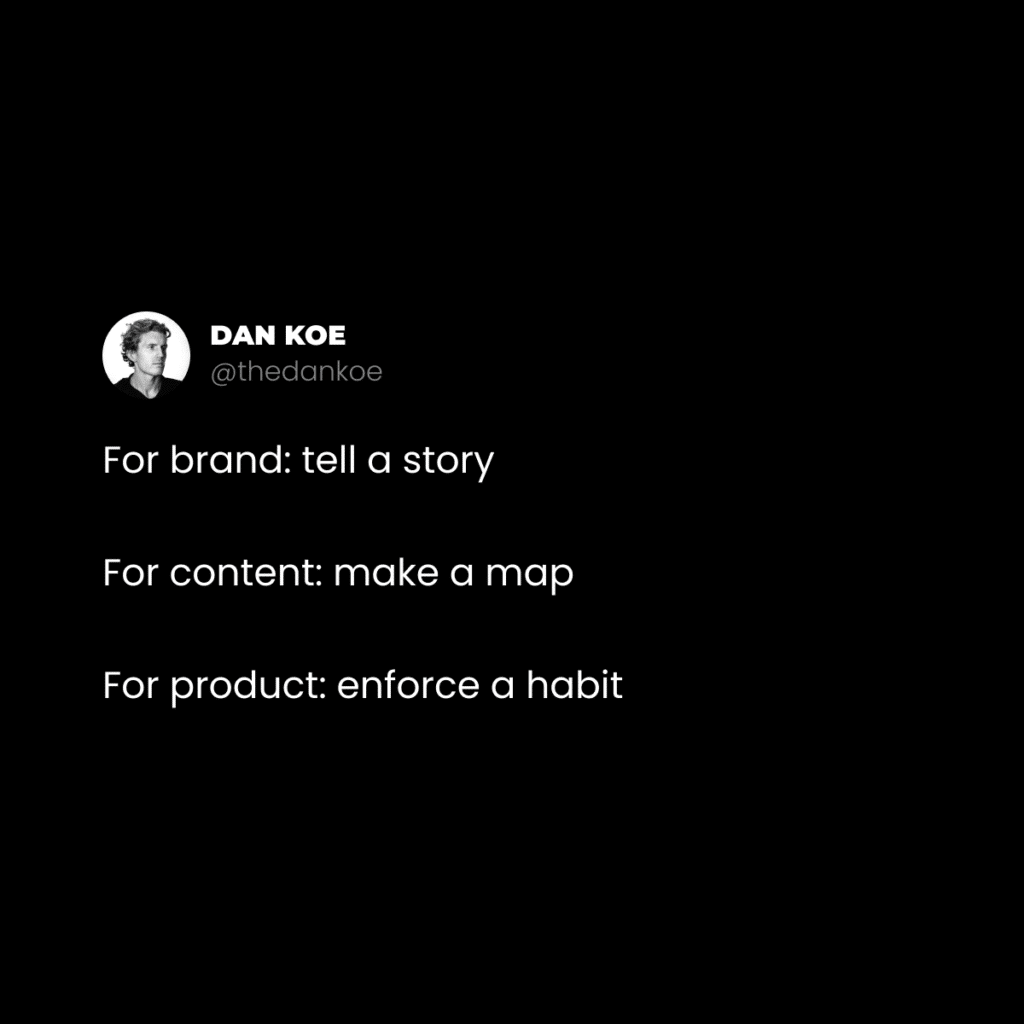
Most people waste 2-3 months building a product just for it to never be launched or worse, never make any sales.
We’re going to do the complete opposite.
You’re going to make money before you even start building the product.
That way, if you don’t make money, you can pivot fast and try again.
Once you strike gold, you give it everything you have, build it over the course of 2-3 weeks, and launch a successful product.
This is yet another reason why education products are superior.
- You can test and iterate fast.
- You can turn them into software or another product.
- They are genuinely helpful to those who purchase them, if they’re good.
In other words, most products should start as an education product, and most founders could create a new revenue channel simply by adding some form of education, even if it’s just an ebook.
Choosing Your Target Persona
People get stuck on this part way too much.
Let’s make it simple.
You need a target persona—who you are positioning the product toward—so that your marketing is specific and tangible. That’s it.
The thing is, there is a much larger market of people who will also resonate with your marketing. Especially if you are marketing with social media. You don’t want to be too specific or else your content won’t get spread to more people.
Personally, I think you should choose from two options:
- Target yourself or your past self.
- Target people who have a lot of money (founders, executives, those with high paying jobs).
The problem with targeting people who have a lot of money is that you often don’t understand them. You can’t relate with them. That will seep into your marketing. However, it’s a great option for those who have either worked with these people before or are following a lot of them on social media.
That’s all you need for now.
A vague idea of who you want to target.
Creating An Offer They Can’t Resist In 5 Steps
You don’t start with the product.
You start with the marketing.
Because if you get the marketing right, you can build the product around what works.
It’s a lot easier to build a product based on good marketing than it is to create marketing based on a bad product.
Now, take your topic, all of the ideas you’ve gathered, and write these down:
1) Big Problem
This is the most important thing that needs to be nailed down.
What is the big burning problem related to the topic?
Where are people at right now, and if they don’t change, where will that lead?
How does that one problem splinter into 100 more?
The problem is the starting point of their transformation.
The problem should be
- Relatable – they have to be able to feel and experience the problem.
- Relevant – the problem has to be important and worth solving.
- Research backed – you have to make sure that you aren’t just making the problem up.
Most burning problems fall within the health, wealth, and relationships categories.
So if you’re topic is weight lifting, the problem could be a few things:
- Health example – without resistance training, you’re more likely to develop chronic disease and have difficulty moving around as you age.
- Wealth example – if you don’t look good, people won’t respect you because your body reflects your discipline and commitment. You’re less likely to get opportunities, promotions, and trust from high value people.
- Relationships example – you lack the confidence to go up and talk to a stranger, or you feel insecure when you take your shirt off around your spouse leading to a poor sex life which creates little problems in other areas of the relationship.
Surprisingly, the most burning problem here isn’t related to health. It’s related to being perceived as high value for better opportunities and relationships.
If we wanted to amplify that problem further (you should), you would talk about how a lack of social opportunities leads to a feeling of loneliness. That effects your mental health that makes it harder to act with discipline in any other area of your life. You get stuck in a specific job and environment and have no idea why you can’t get out.
As a tip, none of this will be perfect after the first round of brainstorming.
This marketing strategy is something you refine as you read more books, content, listen to audiobooks, and talk with people with this problem.
Testing these ideas as social media posts also helps. The more engagement you get, the more likely it is that it’s a good idea to include in your marketing.
2) Desired Outcome
If the big problem is where people start, the desired outcome is the other end of the transformation.
Meaning, if you don’t nail down the problem (it will take some time for the right idea to strike) most of your marketing falls apart. Another reason why you should build an audience so you can test these ideas for free in your content. Use 2 Hour Writer for that.
If our problem, in general, is a lack of confidence and others not perceiving you as valuable, the general desired outcome is having a body that commands respect.
Now, we need to again make that more relatable, relevant, and research backed.
What do people actually want? Why do they want it?
For men, they want visible abs, a decent jawline, broad shoulders, and to feel confident in their own skin when it’s time to talk with other people or get naked.
For women, I can’t really speak to this, but I’d assume they want an hourglass figure, a nice butt, visible abs, and to feel “hot” and sexy. They want their man to fawn over them.
You can pair this with a big benefit to answer the “why?” question.
Why do men want visible abs?
Why do women want a big butt?
Remember, a lot of the specificity here stems from your target persona.
3) Believable Timeframe
Timeframes supercharge your marketing.
30 days.
3-6 months.
6 weeks.
2 hours.
They help make your product tangible. They are a reference point that spark desire in the reader.
Timeframes also help compress what you put into the product. A lot of people just throw everything they know into one product rather than only putting in what is valuable to solving the problem and reaching the desired outcome.
You may have to come back to this after creating your personal system.
4) Personal System
Your personal system for overcoming the pain point and reaching the outcome is what makes your product unique.
You could copy a product’s marketing that works, exchange their system with yours, and it would probably sell incredibly well. This is what most products do because that’s what most people want. People want your way of doing something.
How do you create a personal system?
You experiment. On yourself or someone else who is willing to help you and fits your target persona. (This also gives you results that you can show for social proof if you are a beginner.)
Here’s what you do:
- Open something like Kortex to write this down
- Remember the problem and outcome
- Write out a list of steps they need to take over the course of the timeframe
- These steps should involve everything related to reaching the outcome (with something like weight training, nutrition usually has to be touched on as well)
- Test it on yourself or your target persona for that timeframe
- Write down places that can be improved
- Rewrite the list of steps and test it again
- Repeat until it can get results for more people
Then, slap a name on your system.
For something like weight training or health, you see this all the time.
Intermittent fasting is a personal system that went on to be a term recognized by a huge portion of the world.
Stronglifts 5×5 is a personal system that is now the “go to” for most beginners in the gym.
If you can bake in other aspects of your marketing to this, like the “2 Hour” in 2 Hour Writer, it becomes a lot more powerful.
Your personal system is what makes people think “this could finally solve my problem!”
4.5) Education
If you are creating an education product, you need to create a curriculum or outline for what people need to know.
You can give them the system, but that’s not going to help very much if they don’t understand everything involved with it.
Along with your personal system, outline the fundamentals, steps, and skills that people need to know in order to best use the system.
5) Features & Benefits
Most people only list out the features of their product.
But that’s not persuasive.
People don’t care about the product, they care about how the product changes their life. This is marketing 101 but even the most advanced marketers get tripped up here. (We all forget and don’t remind ourselves of the fundamentals).
When you list out features like:
- 5 week training program
- Cookbook with 20 recipes
- Learn the top 5 exercises for chest growth
Pair them with a compelling benefit, or completely exchange the boring feature for the benefit:
- 5 week program so you know exactly what to do when you step in the gym (no more feeling lost!)
- Cookbook with 20 filling and low calorie foods so you can feel stuffed without the guilt.
- The top 5 exercises for chest growth so you don’t waste years without developing shirt splitting pecs.
From here, take all of the features from your personal system and education.
List them out.
Add benefits to them.
All of this is necessary as it will become the building blocks of a high-converting landing page.
6) Delivery Mechanism
Let’s recap everything we’ve learned with a new example.
- Topic – productivity
- Target persona – my past self. An 18 year old who wants to balance study and building a business
- Big problem + negative outcome – I don’t want a traditional 9-5 job, but I’m falling behind in classes and my business has taken a backseat. If I can’t study for long periods and work on my business for long periods, I’ll get stuck in a comfortable job and it will be extremely difficult to get out. 40 years later I would wish that I took the time to study.
- Desired outcome – deep focus for 12+ hours a day without adderall
- Believable timeframe – 14 days
- Personal system – “The Attention Marathon” a training program for your mind to run a marathon
- Education – everything about the flow state, dopamine, workspace setup, avoiding distractions, etc.
I know this is a validated idea because I researched YouTube beforehand. People want to focus for extreme amounts of time.

Now that we have a soft marketing plan and offer outline, we need to decide on how we are going to deliver the actual offer.
You have a few options here:
- Ebooks – quick to make but hard to charge a lot for.
- Email course – structured learning but most people fall off.
- Cohort – a 4-8 week curriculum with calls and a community. Only opens for enrollment 4 times a year. Good for scarcity and perceived value, but expensive.
- Normal course – an evergreen product that can be promoted at all times, but you need a lot of traffic.
- Community – monthly recurring revenue = monthly recurring work. Harder to sell but a huge pay off if you commit to it.
- Software – takes longer to build, higher chances at failure, but can pay off big time if you dedicate 5-10 years to it (or land the viral jackpot fast).
To make any of these more valuable, you can add a template, tracker, or worksheets to it. That alone would make the education product worth paying for over just watching the free video above.
I can’t really tell you which one to choose… but I can tell you that you will probably create more than one.
A good beginner progression could be this:
- Start with a $27 ebook on a specific topic like “focusing 12 hours a day for a year”
- Turn that into a module of a larger $150 course with a “Focus Hub” template to plan their study and work blocks
- Expand that into an even more comprehensive $399 cohort on “Living In Flow”
You can promote the ebook anywhere. You can promote the course on backend emails or YouTube videos. You can promote the cohort once every quarter everywhere.
The entire job of your delivery mechanism—ebook, course, cohort, etc—is to fulfill on your marketing and offer.
After you’ve outlined everything that will go in your first offer, it’s time to make your first $1.
Landing Page, Launch, Build — In That Order
I want to reiterate that this is the best route for beginners.
You can’t do what we’re going to talk about with almost any other type of product.
In the past, digital products weren’t really a thing.
You would spend a ton of time building a product that may or may not work.
You pour money into product development, set up manufacturing and distribution, then launch.
There’s a statistic circulating the space of something like 95% of businesses fail within their first year.
The thing about building an audience and digital product is that you can pivot.
You can test ideas daily in your content.
You can turn those ideas into a marketing strategy.
You can build a landing page, add payment, and launch preorders.
If it doesn’t work, you can scrap it and try again an infinite amount of times until it works.
In other words, it is impossible to fail if you persist and iterate.
And when it comes time to turn that into a startup or more demanding physical product, you already have so much data that the likelihood of success is much higher.
Okay, we have our marketing strategy, here’s what you do next:
Create The Landing Page First
To repeat myself:
You are going to create the landing page first on a platform like Stan.
Then, you’re going to launch the product. Be sure to tell people that the product releases on a certain date. Inside Stan, you can add a module to the product that gives everyone details as to when it will go live.
Once you make the first sale, the pressure is on. You have no option to quit now. You have to focus and build a good product by the release date you put in public. This is a public accountability mechanism so you can’t chicken out.
Now, copywriting is easy once you have the pieces of the offer down.
The entire point of copywriting is to illustrate the offer in a clear and persuasive way.
We have the persuasive part down, now we need the structure.
There are many ways to do this, and I recommend you research them, but here’s how I structure my pages:
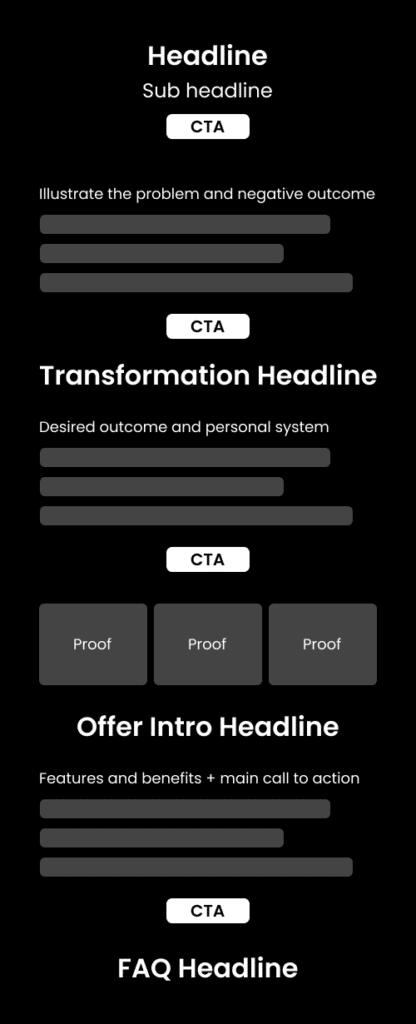
The best way to build and host these products, again, is on a platform like Stan.
The landing pages are simple to make (they’re just writing) and you can host any kind of digital product. Plus, all of your links are products live on a LinkTree style page which is perfect for promoting in your bio, posts, and newsletters.
Headline
Your headline and sub headline should be a condensation of all the value inside of your offer.
Your job is to combine the most potent parts of the big problem, desired outcome, personal system, timeframe, and potentially the target persona in this section.
For my productivity product, the headline could be:
Study For 12 Hours A Day Without Adderall (With A 14 Day Program)
If you want templates for this, check out Mental Monetization.
Subheadline
In the subheadline, you add the other parts.
Since I only included the desired outcome and timeframe in the headline, because it was the most potent, I could make my subheadline:
Use “The Attention Marathon” system to avoid a low-paying 9-5 and conquer cheap dopamine.
There I pull in the personal system, big problem, and even toss in a high performing topic like cheap dopamine.
Problem + Amplify
In the next section most people call the lead, your job is to illustrate the big problem and negative outcome.
When you start with the problem, you increase the reader’s awareness around the problem. You give them the belief that their life can change (because it can) by using a system that helped you.
Personally, I like to include a a few short sentences that state the problem, then follow that with a bullet point list of pain points that stem from that problem.
You can visit any of my landing pages to see this in action.
If you don’t know what to write here, use your personal story.
Where were you before?
Why did you want to change?
What did you try that didn’t work?
Personal System
Moving into the next section of the landing page, your job is to show how your personal system is different.
What was the turning point in your story?
How did you discover and create the personal system?
Why is it better than most other solutions on the market?
If you can add a graphic here to help explain the system, even better.
Results or Testimonials
After the personal system, you can throw in images of results people have gotten with your product.
If you don’t have testimonials, you have two options:
- Walk people through your product for free in exchange for a testimonial
- Show your own results
You can use images of yourself (like for productivity or health), or you can use screenshots if your topic is something digital like web design.
Features + Benefits
This is the “offer introduction” section.
Here, you break down every thing they receive inside the program.
The simplest way to do this is just a bullet point list with the features + benefits.
If it helps, think of this list as the opposite of the list of pain points you included in the lead.
You’ve probably seen this before in most products you’ve purchased. It’s just a list of what’s inside + why they should care.
Call To Action
After the features and benefits section you need to close the deal.
I like to do a comparison.
Something like “You before this product” vs “You after this product” that reiterate the pain points and benefits.
This can be a graphic or a simple bullet point list.
If you are using something like Stan, let this go straight into the payment button. Skip the FAQ section in this case.
FAQ
If you are building a custom landing page, which I don’t recommend your first time around (takes too much time and it’s another skill you need to learn) then include a list of common questions and answers.
If these questions can handle the objections people were thinking throughout your landing page, even better.
Launch Launch Launch
Set a release date.
3-4 weeks out from your first promotion.
Promote in your newsletter every week.
Place the link everywhere. In your bio and descriptions.
Write threads, create carousels, or film reels or whatever other kind of content you make around the main topic your product is about.
Include small plugs or call to actions like, “If you struggle with [pain points], the [product] goes live on [date].
Use the elements of your marketing strategy from above every time you promote.
When you are 1-2 weeks out from launch, start increasing how often and how hard you promote.
It helps a lot if you have some kind of early bird discount for those who preorder.
For the sake of brevity, I’ll leave this letter here.
Let me know if you want me to talk more about how to promote your offer in the future.
Until then, you can find previous letters on audience building, productivity, and writing on my site.
Thank you for reading.
– Dan

